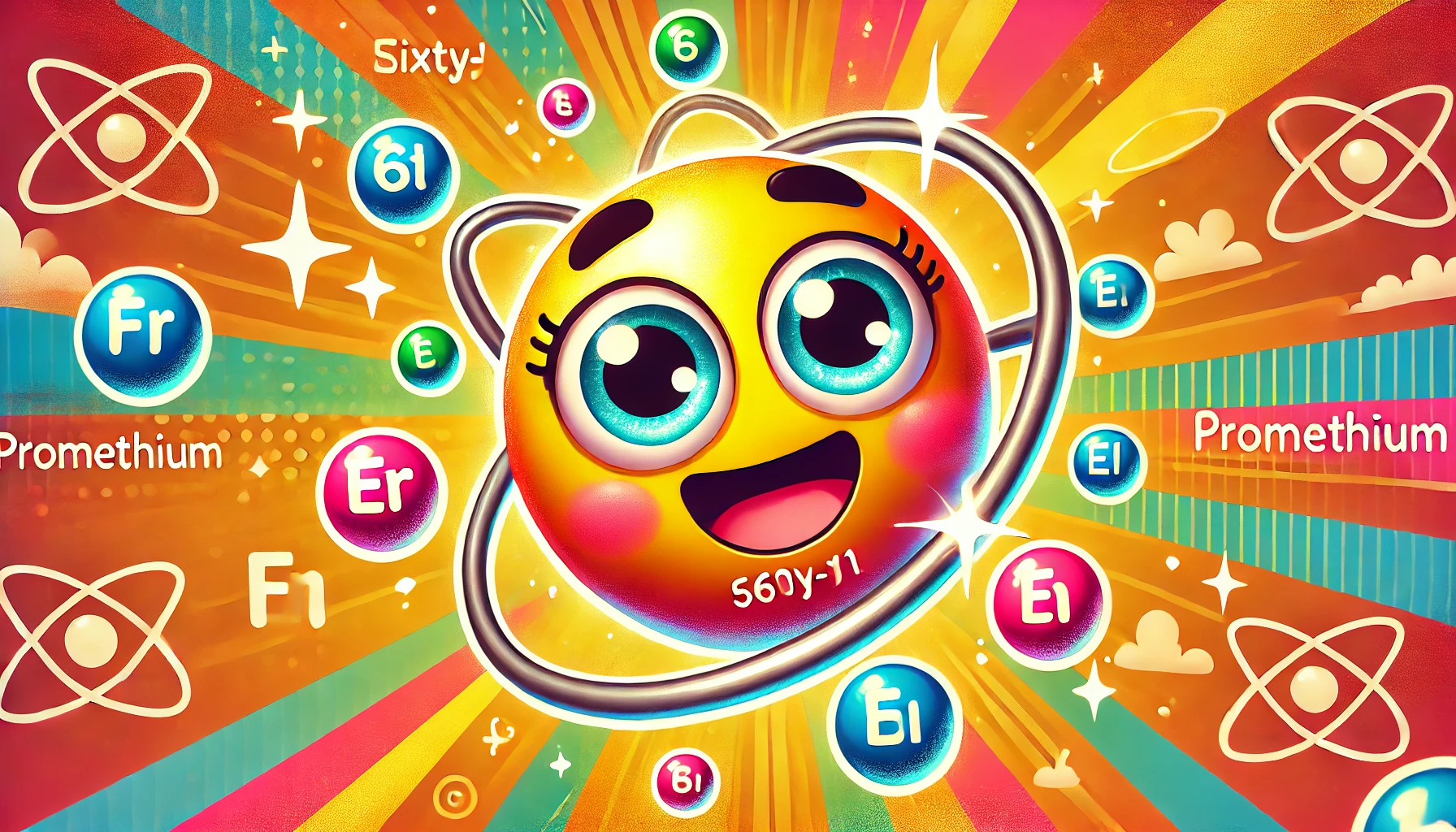Understanding Promethium: Properties, Uses, Health Risks, and Fascinating Facts
Understanding Promethium: Properties, Uses, Health Risks, and Fascinating Facts
Table of Contents
- Introduction to Promethium
- Properties of Promethium
- Uses of Promethium
- Health Risks of Promethium Exposure
- Interesting Facts about Promethium
- Environmental Impact of Promethium
- Conclusion
- References
Understanding Promethium: Properties, Uses, Health Risks, and Fascinating Facts
Introduction to Promethium Promethium is a chemical element with the symbol Pm and atomic number 61. It is a rare, radioactive element that is part of the lanthanide series in the periodic table. This article explores the properties, uses, health risks, and interesting facts associated with promethium, providing a comprehensive understanding of this elusive element.
Properties of Promethium Promethium is characterized by several distinct physical and chemical properties.
Physical Properties
- Appearance: Promethium is a silvery-metallic element.
- Density: The density of promethium is approximately 7.26 g/cm³.
- Melting Point: Promethium melts at 1,042°C (1,908°F).
- Boiling Point: The boiling point of promethium is 3,000°C (5,432°F).
Chemical Properties
- Radioactivity: Promethium is highly radioactive, with no stable isotopes. Its most common isotopes are promethium-145 and promethium-147.
- Reactivity: Promethium reacts with oxygen to form promethium oxide (Pm₂O₃) and dissolves in acids.
Uses of Promethium Due to its radioactivity, promethium has specialized applications, particularly in the fields of technology and industry.
Nuclear Batteries
- Atomic Batteries: Promethium-147 is used in atomic batteries, which generate electricity for spacecraft, satellites, and remote sensors. These batteries rely on the decay of promethium to produce a steady flow of electricity.
Luminescent Paints
- Glow-in-the-Dark Paints: Promethium is used in luminous paints, which are used on dials, instruments, and signs to provide illumination in low-light conditions.
Research and Development
- Scientific Research: Promethium is used in research applications, including studies on the behavior of rare earth elements and radioactivity.
Thickness Gauging
- Industrial Gauging: Promethium-147 is used in devices that measure the thickness of materials, such as paper, metals, and plastics, by detecting the amount of radiation that passes through the material.
Health Risks of Promethium Exposure Promethium’s radioactivity poses significant health risks, particularly with prolonged exposure.
Radiation Exposure
- Cancer Risk: Exposure to promethium can increase the risk of developing cancer due to its radioactive properties.
- Bone Damage: Inhalation or ingestion of promethium can lead to its accumulation in bones, potentially causing bone damage and other health issues.
Safety Measures
- Protective Equipment: Handling promethium requires the use of appropriate protective equipment, such as gloves and radiation shields, to minimize exposure.
- Controlled Environments: Promethium should be handled in controlled environments with proper ventilation and radiation monitoring to ensure safety.
Interesting Facts about Promethium Promethium has several intriguing aspects that make it an interesting element.
Discovery
- Discovered in 1945: Promethium was discovered by Jacob A. Marinsky, Lawrence E. Glendenin, and Charles D. Coryell during the analysis of uranium fission products at the Oak Ridge National Laboratory.
Name Origin
- Named After Prometheus: The element is named after Prometheus, a figure from Greek mythology who stole fire from the gods and gave it to humanity, symbolizing the element’s discovery and use in technology.
Isotopes
- Promethium-147: The most common isotope of promethium, with a half-life of approximately 2.62 years, making it useful for various industrial applications.
Environmental Impact of Promethium Promethium is not found naturally in significant quantities in the Earth’s crust and is typically produced as a byproduct of uranium fission.
Natural Occurrence
- Trace Amounts: Promethium is found in trace amounts in uranium ores, but its concentration is extremely low.
- Artificial Production: Most promethium used in industry is produced artificially in nuclear reactors.
Environmental Concerns
- Radioactive Waste: Proper disposal of promethium-containing waste is crucial to prevent environmental contamination. This includes following strict guidelines for handling and disposing of radioactive materials.
- Limited Impact: Due to its rarity and controlled use, promethium has a limited environmental impact compared to other radioactive elements.
Conclusion Understanding promethium, its properties, uses, health risks, and interesting facts provides valuable insight into this rare and radioactive element. While it has specialized applications in technology and industry, appropriate safety measures must be taken when handling promethium due to its significant health risks. Its discovery and unique properties highlight its importance in scientific research and industrial applications.

<ⓒ WizardMedics (wizardmedics.com)>


